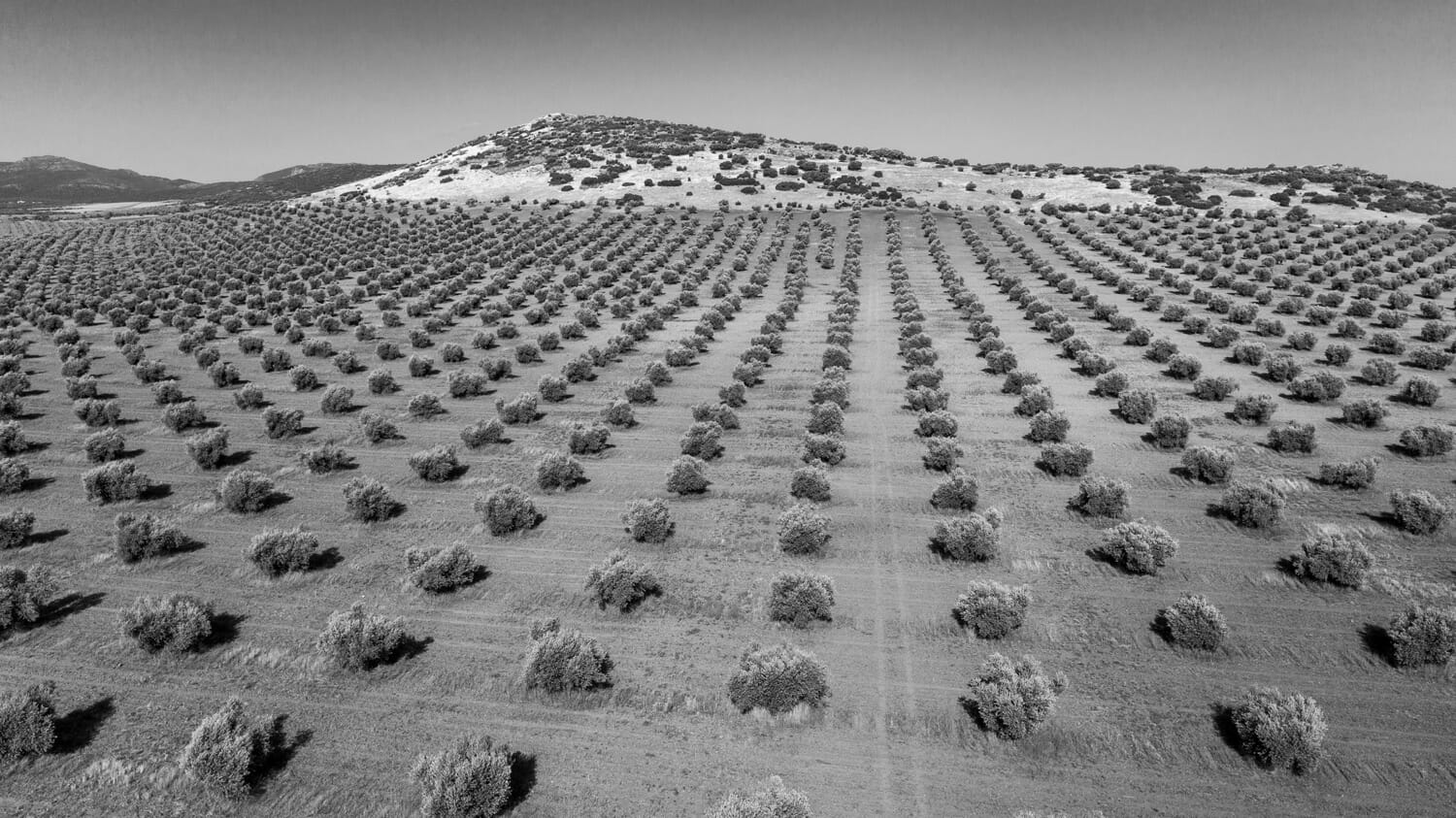Photo by Nicholas Coleman
Coleman Collection #25
PRODUCER
Garcia de la Cruz
CULTIVAR
Picual
Harvest Date
October 2021
REGION
Montes de Toledo, Spain
From the vast foothills of Toledo, Spain where lives Don Quixote’s legend, Garcia de la Cruz grows magnificent olives. The 148 year-old family-owned business utilizes advanced cultivation techniques like fertigation (the direct injection of fertilizer and other water soluble products into the irrigation system), monitored drip irrigation, post-harvest pruning adapted to the needs of each tree, minimum soil tillage and the use of pest preventing organic products that also provide beneficial ripening substances. Each August they remove foliage weakening, sap rise interfering shoots that grow at the foot of each olive tree.
Spain’s more than three hundred million olive trees produce 40% of global oil production. The cuspidate Picual olive, derived from the word “Pico” (“pointed”), dominates the terrain. Garcia de la Cruz grows Picual, Arbequina, Hojiblanca, and Cornicabra, the latter named for its natural goat-horn shape, all scattered throughout the titanic landscape.
After tasting a wide variety of cultivars from the master tanks, we’ve selected Picual, which we believe to be their finest monocultivar expression. Following an early season harvest when the olives are still lemony-green, they are immediately cold extracted between 18 and 20 degrees Celsius in a modern Hiller mill and then filtered. To preserve its volatile aromas, the oil is stored in argon gas-filled, oxygen-free stainless-steel temperature-controlled tanks.
Throughout antiquity early harvest oils were reserved for nobility as they produced lower yields while packing a vibrant punch of fresh herbs, pleasant bitterness and an elongated spice. The cause of this peppery sensation – considered a quality attribute – is oleocanthal, a natural phenolic compound with both anti-inflammatory and antioxidant properties. Early harvest oil is best utilized raw, the intent being to cut through and brighten up other ingredients. Try pouring it over your favorite wintertime courses and cuisines.
La Mancha is a large, classified wine region south of Madrid. Tempranillo, locally referred to as Cencibel, is the most widely planted grape variety. At their best, the wines embody bold characteristics of dark fruits, leather, and lightly grilled toast. They are excellent paired with the local cuisine reflective of modest and rural origins, such as Manchego cheese, roasted lamb and goat, and gachas de almorta, a paste made with grass pea.



